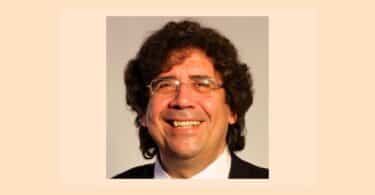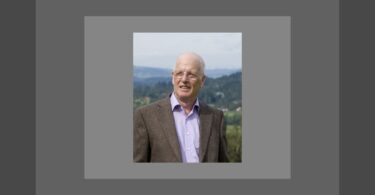Manfred Mueller, MA, DHM, RSHom (NA), CCH is past President of the North American Society of Homeopaths, founder and Professor of Homeopathic Theory and Practice of The Homeopathic College, www.TheHomeopathicCollege.org, a distance learning school specializing in advanced homeopathic protocols and author of the consummate two volume Homeopathic Cancer Drugs – Oncology Materia Medica.

AS: We recently published a review of your two volume set “Homeopathic Cancer Drugs – Oncology Materia Medica” 1 One of the questions that often comes up is whether one should address cancer constitutionally or clinically. Is there a role for each approach?
M.M. I like this question, having thoroughly answered it in my tutorials on homeopathic treatment in general. The classical era method of selecting one single constitutional remedy for a patient has largely failed when treating cancer. But this is far too big a topic to be discussed here.
The prominent homeopaths such as Cooper and Burnett that actually cured cancer frequently prescribed on the Hahnemannian method, taking the whole syndrome of a developing cancer into account, with special consideration of its causes, plus the general state of health, and the constitutional characteristics of the patient. In my Oncology Materia Medica you will find a subchapter containing the constitutional characteristics when available.
Take for example two cases of osteosarcoma of the tibia and osteosarcoma of the vertebrae. Symphytum cured both. In these cases, the constitutional characteristics were as good as irrelevant. This primarily applies to the mental characteristics, although I have listed those too in the Oncology Materia Medica because when the cancer syndrome is accompanied by a specific mental state, this knowledge can be very helpful. As Hahnemann said so succinctly “…when they are present”, they should be used.
When I first read Dr. Ramakrishnan’s book, I was struck by the fact that the specific was miraculously always accompanied by a definitive constitutional characteristic on the mental level. I am somehow never that lucky. A case of lung cancer may benefit from Lycopodium because of the specific pathological and rather scanty symptom picture of a right sided or diagonal evolution of the lesion, with a late afternoon aggravation, but no other constitutional sign of that remedy.
This is typical of many of today’s cancer patients, in my observation. More often than not, patients like that do not necessarily fit the constitutional mental pictures of Lycopodium, Conium, Phosphorus, or even Carcinosinum. There are numerous examples of this in our literature or cured cancer cases.
AS: I recall struggling to save two cats with sarcomas. It seems that cancers can present as one-sided cases with an absence of symptoms. What is your experience with that?
MM: Cancer is undoubtedly a one-sided disorder, with a paucity of symptoms. The majority of patients do not develop symptoms until the cancer is advanced. This requires sharp observation and some ingenuity to come up with indications for remedies.
In pets like your cats, there is the added difficulty that cats can’t talk and describe their subjective sensations or feelings, so you rely on even less of a symptom picture in case of sarcoma. However, there is much you can learn from your cats. The first question is, are they related? If so, then this is likely a hereditary cancer.
The next question is, in which tissue did the cancer originate? We have precise pathological indications, listed in the Cancer Materia Medica. Sarcoma is a cancer of the connective tissue, meaning bone, muscle, tendon, cartilage, vascular tissues, etc. Suppose the tumor originated in the cartilage. Silica and Symphytum come to mind.
I once saved a cat with sarcoma of the muscle tissue with Ruta. Besides tissue and location indications, we ask, is this a primary or metastatic cancer? Certain remedies have cured metastatic cancers. They are listed under the subchapter Pathology in the book. For example, there is a remedy called Metastatic melanoma.
Furthermore, we ask, what is the consistency of the tumor, hard or soft. Hard tumors are covered by Conium, Scirrhinum, etc. Soft tumors by Thuja, Phos. etc.
Then we also look for a cause or etiology. Our materia medica and repertories are full of references to causes. Especially Clarke made a point to include this indication in his Dictionary.
Suppose a tumor develops after a vaccine. Thuja is one remedy that has this indication. You can find this information under etiology in the Oncology Materia Medica. Etiology is one of the fifteen subchapters under each remedy in the book.
In the Complete Repertory, you will find at least 104 medicines listed for “ailments after vaccines” under “Generalities”. There are even subrubrics for specific vaccines, such as rabies or tuberculosis shots. Then, we can also counteract any specific vaccine effects using the tautopathic pharmacode, prepared from any given specific vaccine, even from the same lot, if we have that information.
This method is important because the remedies listed in the Repertory are only the older vaccines. Many new ones have been added since, that are not listed. If we have the information which vaccines were used, we can antidote their action. Plus, if you treat animals, you will want to have a complete set of the pet or livestock vaccines.
Knowing the cause is also important when you perceive that any other significant factor or agent has triggered or preceded the cancer. I once treated an osteosarcoma of the pelvis successfully with X-ray in continuous Q-potencies. It had developed after the patient received hundreds of CT scans for hip surgery. It improved immediately and was cured over an eight-month period.
Grimmer would have used Phosphorus or Cadmium iodatum to remove radiation effects. I had a client with hairy cell leukemia who worked at the Savannah River Nuclear Reprocessing Plant. This gave me the idea of using Plutonium nitricum. In the Oncology Materia Medica, I tell of a case of diffuse pontine glioma improving after clearing with the remedy Mobile phone.
AS: I’m sure some people seek homeopathy who will also be opting for conventional treatment. How do you work with those cases?
MM: About one third of my cancer patients also use conventional treatment. They often do very well with the combination. Homeopathic cancer treatment can be instituted from the very beginning, even while already on conventional treatment with surgery, chemotherapy and radiation.
But in many non-invasive or beginning cancers there is enough time to test the improvement from homeopathy alone, and patients then never bother with conventional treatment, because the improvement is so obvious.
On the other hand, some people who are less confident in homeopathy do not want to “risk” homeopathy at the beginning. So the first step is usually to help over the surgery or over the adverse effects of the radiation or chemotherapy.
When chemotherapy is instituted, the homeopathic treatment usually involves a combination of remedies countering the chemo effects and acting directly on the cancer. It is never clear in these cases which caused the shrinking of the tumor—the chemo or the homeopathy. But does it really matter, as that is mainly an academic question.
The fact is, in pure homeopathic treatment without the surgery, chemo, and radiation, patients overall fare much better than in the mixed cases. But the word has not yet gotten out what homeopathy can do.
According to a recent study, 50% of cancer patient die from chemo, not from cancer. It is not much better with radiation. But when homeopathy accompanies these therapies, patients fare significantly better. Homeopathy can quickly restore some of the damage caused by these therapies. This is my clinical observation as well as confirmed by multiple scientific studies.
AS: I’ve seen homeopaths use both low and high potencies in cancer cases. Some repeat remedies often, and others take a watch and wait approach. Can you discuss these variables in dosing and any others that come into play?
MM: A very important question and without a simple answer. I have discussed posology in my tutorials at length and in detail, and cancer is no exception. The high centesimal potencies used in the absence of having had access to Hahnemann’s sixth edition, which was not published until 1922 in the English translation, were simply the result of a misunderstanding of the potential dangers of unlimited potentization. These homeopaths mistakenly thought by going higher in the potency, they were merely diluting the dose of the remedy more, without realizing the higher potencies could also increase their potential violent effects on susceptible patients.
Hahnemann for this reason had already limited the centesimal potencies used in homeopathy to 30C, thus avoiding the violent action of the higher centesimals. He subsequently developed the quinquagintamillesimal potencies for the same reason. Only these milder potencies lend themselves to daily repetition without adverse effects, and they are the ones recommended for serious pathology like cancer.
These are the ones I recommend using, if you do not want to push your patients over the edge by overtaxing their life force in the sense that Kent referred to in his lecture on Hepar sulph. I have seen high potencies, routinely prescribed by certain students of homeopathy for cancer, push the vital force beyond its limits, resulting in the decline of the patient. Potency and dose, like drug selection must both be individualized.
By the way, many of our medicines were not commonly used in potency. Many remedies derived from medicinal herbs, for example, were given in tincture form, especially in cancer treatment.
Many of these were highly effective in cancer treatment. Especially Cooper advocated these medicines, including, Alliaria, Ornithogallum, and many others, he preferred to give in the arborivital tinctures.
I feel that experience must determine what is effective, not dogma, and we have two hundred years of that in homeopathy. That is why the Oncology Materia Medica also has a special subchapter for posology.
AS: For cancer, Dr. Ramakrishnan uses the plussing method and Dr. Banerji has his own protocols, using remedies that wouldn’t normally be found on repertorization. How do your methods compare with these?
MM: My method uses the homeopathic selection, which is finding the best tool for the job. This means, using all the tools in our toolbox. Why use plussing only for cancer? It is a Hahnemannian guideline for all repetition. I uses plussing for all repeated doses of a given potency. This eliminated potential proving symptoms in sensitive patients. It also assures that the patient does not get habituated to a given potency from repeated doses.
Repeated doses are necessary in cancer treatment. It generally takes time to reduce a tumor. So, in cancer treatment we “plus” all the time. I find the liquid Q-potencies are the most gentle for repetition in the long run. (for more details see my Posology tutorial on our website https://thehomeopathiccollege.org/
The Banerjee protocol is based on the most likely drug statistically that has cured or improved a specific type of cancer. For example, a combination of Calcarea phosphorica 3x and Ruta 6c in pellets was found effective for brain tumors, especially gliomas. The efficacy of this has been confirmed in a 2005 study by Preethi in about 15 patients. For the study, they used the globules.
I use the plussing method of the same, as recommended by Hahnemann, and in this way, I have used this protocol successfully curing cases of brain tumor. As I said, this avoids potential proving symptoms in sensitive patients, which could be a problem if taken in repeated doses and in the same potency in pellets (globules).
However, I rarely use a flat-rate or textbook recommendation for posology. It is all based on observation of the case. My approach to cancer does not really deviate from all my treatment, described under the Mueller MethodTM.
We have done an interview on it before, and much of the information is available on our websites. An example is the case I mentioned above of diffuse pontine glioma; Helleborus and Gelsemium were selected on the symptoms of the case, and X-ray and Mobile phone were given on etiology indications. These remedies saved the boy’s life. I doubt the Banerjee Protocol would have worked in this case.
AS: Most allopaths are skeptical of homeopathy but successful treatment of cancer might begin to open their eyes. Where can one find documentation of the efficacy of homeopathy in cancer (in addition to case records of the last 200 years).
MM: I incorporated as many cases in the Oncology Materia Medica as I could find. I have also published three reviews of the scientific literature on homeopathic cancer treatment. The first appeared in 2007 in The American Homeopath, entitled The Evidence: Scientific Studies on Homeopathic Cancer Treatment”, The American Homeopath, vol. 13; 2007 https://homeopathicassociates.com/cancer/the-evidence-scientific-studies-on-homeopathic-cancer-treatment/
The second one was published five years later, called Is Homeopathy an Effective Cancer Treatment? The American Homeopath Volume 18, 2012;
https://thehomeopathiccollege.org/mr-muellers-articles/homeopathy-effective-cancer-treatment/
The third one was published in 2017, by your journal, Homeopathy for Everyone, Homeopathic Cancer Treatment: Research Published from 2013 to 2017;
Together, these reviews cover more than a hundred and twenty studies and should convince even the most skeptical of the conventional doctors that homeopathy can make a real contribution to cancer treatment that is both safe and effective.
AS: Thank you Manfred for this information rich interview. You’ve given our readers a lot of food for thought.
Homeopathic Cancer Drugs – Oncology Materia Medica by Manfred Mueller is reviewed by Rochelle Marsden.
https://hpathy.com/book-reviews/homeopathic-cancer-drugs-2-volume-set-oncology-materia-medica/







Speaking and talking with patients that have hired Mueller for cancer is a good milestone of effectiveness. In regards to large, hard tumours, none were reduced by his methods and I agree with his limitation on the potencies, plussing and approach. Mueller’s intake could be improved and is minimal and not as individualized as should be even though a multitude of everything is covered in the cancer world from vaccinations to exposures.
I do not know who you are, however you obviously do not know what you are talking about. Hundreds to hard tumors have reduced in size or completely disappear with the Mueller Method of homeopathy, which is scientific homeopathy, or simply Hahnemann’s methodology applied to the modern situation of toxic drugs and environmental contamination.
Manfred Mueller has shared many important tips in the interview. There’s a lot to be learned from it.
Martin Earl
Are LMs just as effective as Qs? My homeopath said it’s a myth that higher potencies like 20Oc are aggravating and work on the psychosocial level but I was leery, prayed 🙏🏼 And she changed her mind to LMs 🙏🏼🙌 but still sent me the higher ones mentioned above but thank the LORD for the knowledge of some of homeopathy. I don’t know of any other homeopaths who use Qs, as I’m sensitive and I diluted these LMs to 7 cups and use them drop method in another cup topically on my forearm. I’m someone with diagnosed mast cell disorder and take Apis 200c and Nat M 30c as needed and I’m on medications cause I had very high troponin due to this untreated condition. Before I was being called psychosomatic despite all my symptoms I reported to docs. Hardly any doc knows that of this leery and strange condition. I took psych meds for awhile and later learned some are mast cell stabilizers like benzos and some lower IGE like SsRIs, which is high in me, others are antihistamsnic as well, so if one improves on these for the moment, then the docs think this was the issue. My spill on this. A pair of allergists found this on me but now some docs still don’t believe this. I can’t even believe this. Also PTSD might be a role player on this. Thanks for these insights, sharing. 🕊